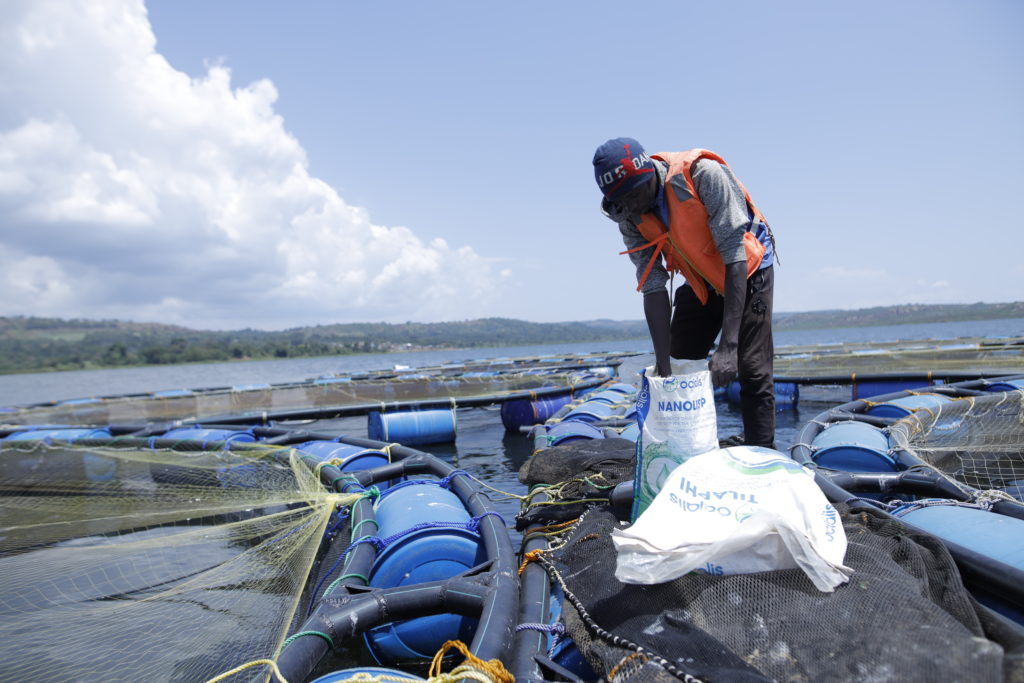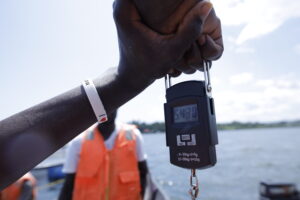
Fingerlings are delicate and small, and their digestive system is not yet fully developed. Furthermore they have specific feed requirements that are important for the growth and survival of fingerlings. As such it is important to select the right feed, and feed them in the right way in order to help them grow fast and healthy.
Physical characteristics of fingerling/starter feed
- Size: Feed should be of small size to match the mouth size of the fish. This eases taking up feed by fingerlings and reduces wastage.
- Uniformity: To ensure even consumption and growth of fish, feed should be consistent in size and shape.
- Palatability: Good feed should be well flavored with good odor and easily seen by fish to maximize intake and viewing.
- Floatability: When the fry are still very young, their swimming ability is always slow and they feed at a relatively slow rate. Feed should float long enough to give all fish an opportunity to eat.
- Stability: Good feed pellets do not easily break down in water. This reduces deterioration of water by uneaten feed which would disintegrate and settle at the bottom of the production unit.
Nutritional requirements of fingerling/starter feed
– Nutrient rich; Fingerlings have a high metabolic rate and can easily convert protein into body mass. As such they need a diet that is rich in protein and other nutrients. Therefore, fingerling feed should have the highest Crude Protein content between 55%-50%.
– High digestibility: Fingerling feeds should be made of ingredients that are easy to digest, and this enhances nutrient absorption, and reduces feed wastage.
What size of feed do they need?
| Fry / fingerling size (g) | Feed size (mm) |
|---|---|
| 0.2 – 1 | Powder – 0mm |
| 1 – 8 | 0.8 |
| 8 – 20 | 1.5 |
Best feeding practices for fingerlings
- Feed on schedule; It is advisable to make a feeding schedule per production unit, to feed at the same times each day. This trains fish to eat at specific times
- Feed from the same location; incase of fingerlings, you can make a floating circular ring to concentrate the feeds on water for fry to easily feed.
- Spread the feed so that all fish can access the feed given to them. Feeding with prevailing winds allows the feed to float across the pond/tank. Overfeeding should be avoided since wasted feed affects water quality and increases production costs.
- Feed by response; once you feed at specific times, they will be hungry by the time you feed them therefore their response will already be high during the feeding times. But if they show low response, then it’s better to feed less in order to minimize feed wastage
- Feed as planned: the right feed type and quantity. For each production unit you know the feed type and quantity required per day according to your feeding plan. Ensure that this plan is followed for easy tracking of the feed performance





